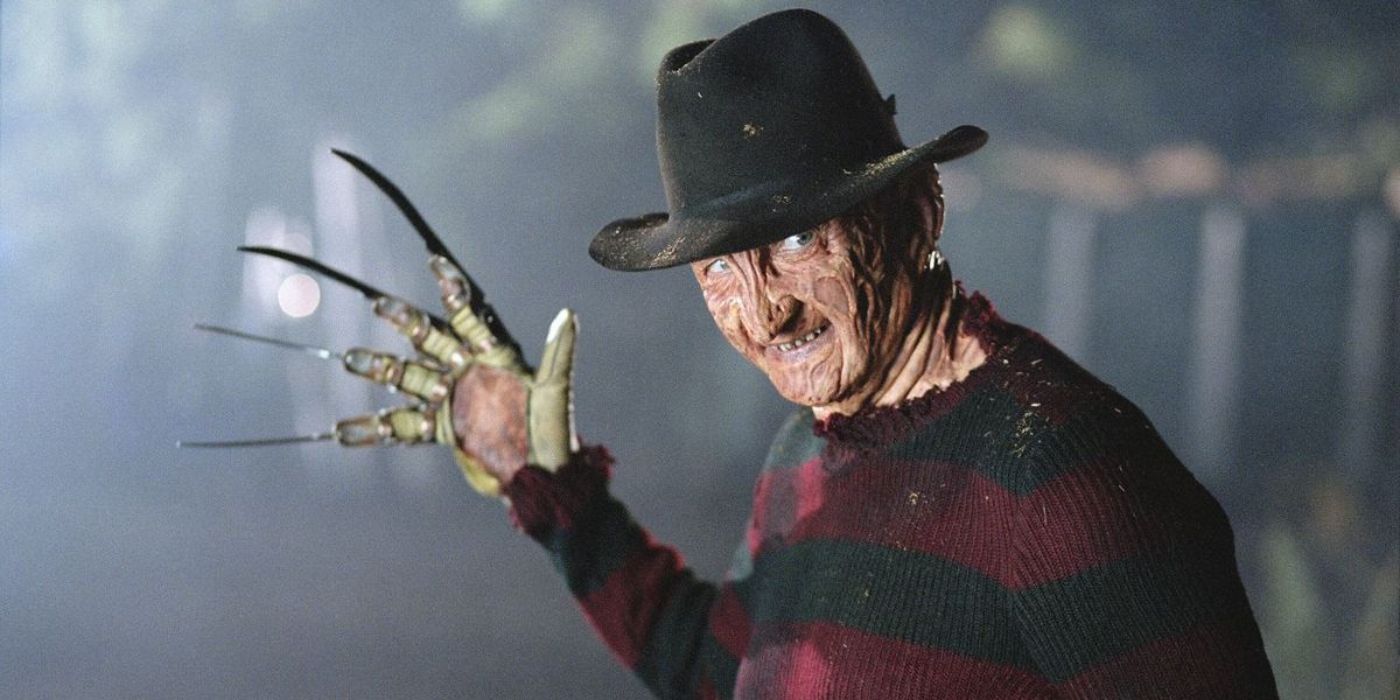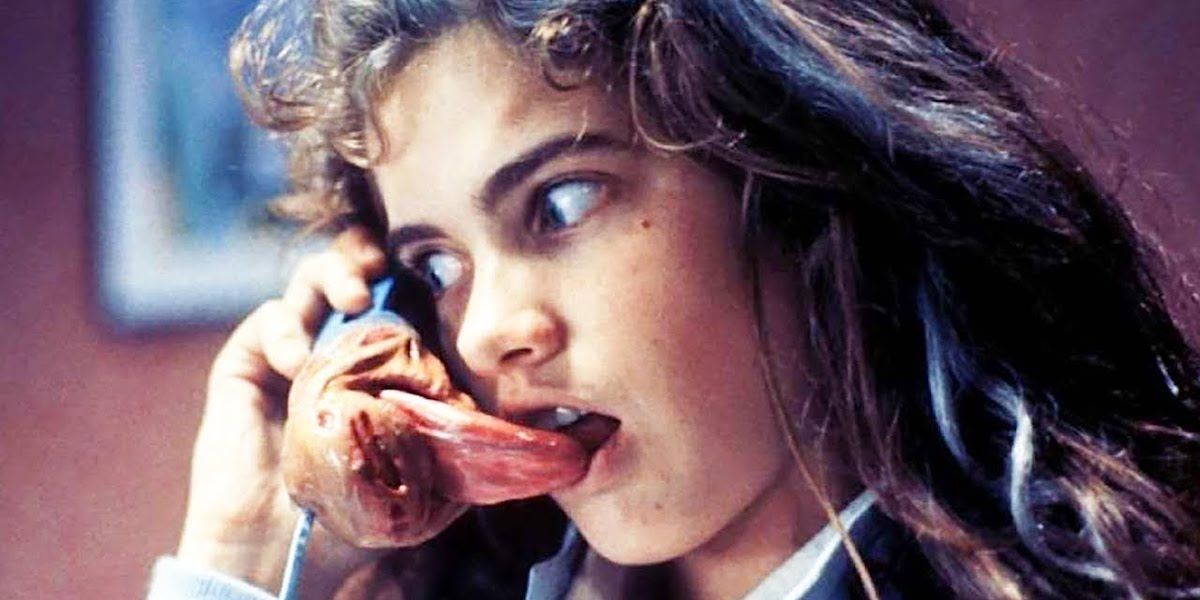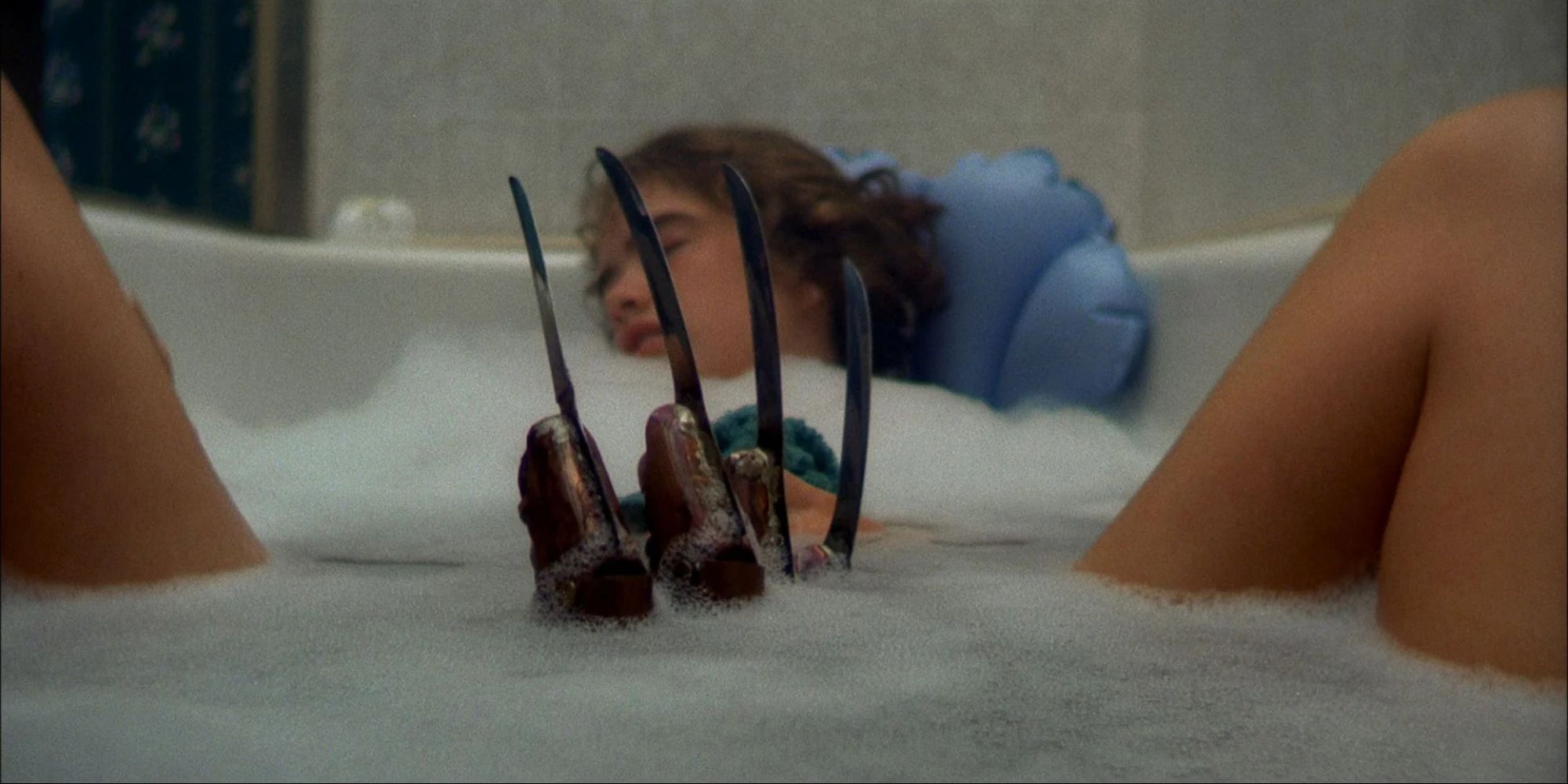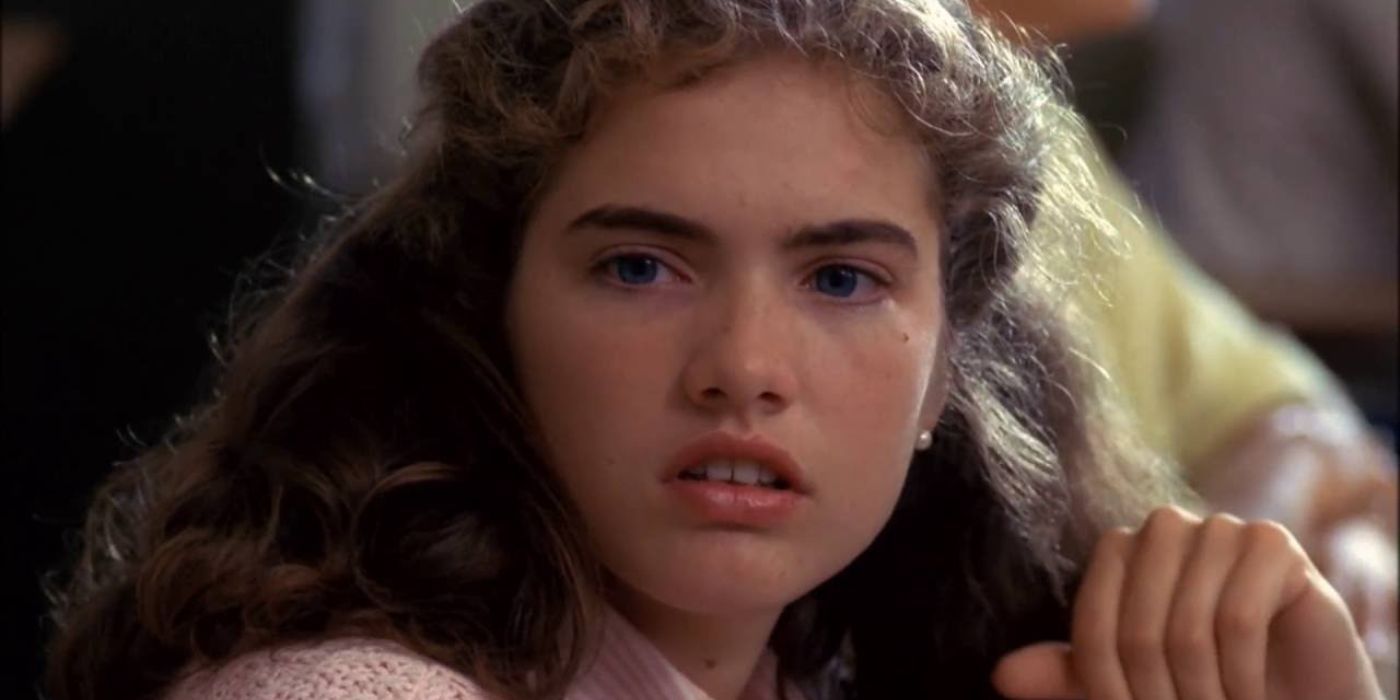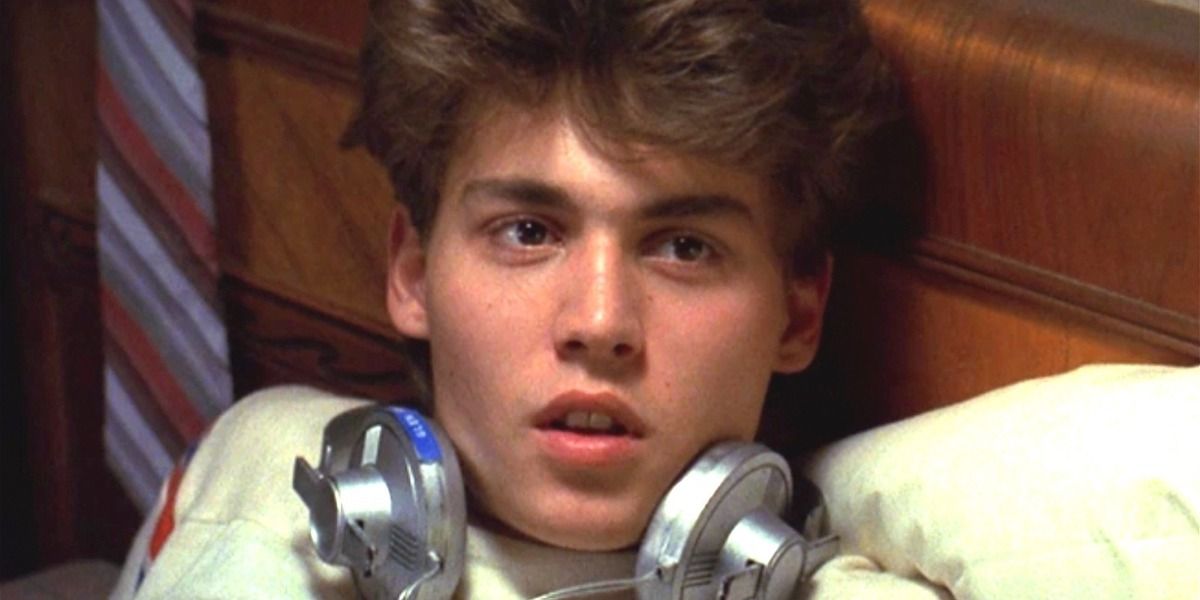Ever since Freddy Krueger first slashed his way into horror lovers' hearts in 1984, he has remained an icon. With his deliciously diabolical sense of humor and razor sharp "fingers," Freddy took A Nightmare on Elm Street – Wes Craven's low-budget supernatural slasher film that was making its debut just as the genre was dying out – and birthed a cultural phenomenon.
A Nightmare on Elm Street follows heroine and Final Girl Nancy Thompson (Heather Langenkamp) and her friends, Tina Gray (Amanda Wyss), Rod Lane (Jsu Garcia), and boyfriend Glen Lantz (Johnny Depp), who are being hunted in their dreams by the ghost of neighborhood child murderer, Freddy Krueger (Robert Englund) – and killed in reality. This supernatural horror turned the slasher genre upside down (in some cases, literally!), creating a villain so inimitable that Freddy Krueger went on to become a cultural icon, spawning eight more films in one of the biggest, bloodiest franchises in the history of horror.
Reimagining the Slasher Genre
By the time A Nightmare on Elm Street came out in 1984, slasher films had already reached their peak of popularity and were quickly growing stale. The golden age of slasher films took off with the rousing success of John Carpenter's Halloween (1978), soon followed by the first Friday the 13th film in 1980 – the most commercially successful slasher since Michael Myers first made his spine-tingling appearance two years earlier. By the time Nightmare on Elm Street hit the big screen, three Halloween and Friday the 13th films — each — plus a huge wave of knock-off B-list slashers, had already been released. Then Freddy Krueger – with his gruesome burnt face, dirty striped sweater, and razor gloves – sliced his way through the realm of dreams, blurring the line between reality and nightmare, and the rest was history.
An instant commercial success, A Nightmare on Elm Street revitalized the slasher genre, and it's not hard to see why. The premise of a horribly burned boogeyman who attacks teenagers in their dreams, a terrifyingly vulnerable space in which they have no control, was, and still is, a clever spin on a genre that often suffers from the same tired old tropes. But it's Robert Englund's performance as Freddy, positively brimming with a chillingly gleeful sadism, that pushes a film with an intelligent premise to a film that stands the test of time.
Robert Englund's Freddy Krueger Is the Man of Your Nightmares
What can be said about Robert Englund's Freddy Krueger that hasn't already been said? Englund is mesmerizing as Freddy, clawing his way through teenagers' dreams with a sadistic glee and a flourish of his razor sharp glove. He is simultaneously funny and terrifying, theatrical and sinister. Englund's love of playing the character clearly comes through, and it's not hard to tell why his performance is still so revered to this day – he was and still is the true king of nightmares.
What made the character of Freddy Krueger such a trailblazer was the fact that, unlike two of the slasher genre's greatest killers, Michael Myers and Jason Voorhees, Freddy wears no mask – he is a killer who shows his horribly disfigured face and speaks to his victims with no small amount of sinister delight. And the most terrifying of all: Freddy can attack his young victims anywhere and at any time. There is no skulking in dark shadows or hiding in the back seat of cars, waiting for unsuspecting victims to fall into his trap. There is no safety net with Freddy: the moment you close your eyes and fall asleep each night, Freddy is coming for you.
Nancy Thompson Is the Ultimate Final Girl
In an era where the victims in slasher films were often portrayed as damsels, running barefoot – and often half naked, of course – from the killer, Nancy Thompson stands out as the bold, defiant Final Girl who sets fire to tired tropes (and dream-crashing boogeymen). When Craven was casting the role of the teenage heroine, he was determined to cast someone who wasn't a big Hollywood name. Enter a 19-year-old Heather Langenkamp, who at the time only had a few acting credits, namely several commercials and a 1984 TV film. With such a larger-than-life antagonist in Englund's Freddy, the Final Girl had to be someone who could hold her own.
Langenkamp plays Nancy with the perfect balance of sweet and spirited. She captures the virginal innocence of the Final Girl trope, but unlike many golden age scream queens, she is certainly no damsel. Nancy is clever and proactive, finding a way to try and lure Freddy out into the real world rather than simply sit (or sleep) idle and wait for him to make his move. Englund is spell-binding as the king of nightmares, but Langenkamp plays Nancy as the perfect foil, subverting the Final Girl trope, and undoubtedly making her mark as one of the best Final Girls of the 80s.
'A Nightmare on Elm Street' Is a Visual Bloodbath
Nightmare on Elm Street is a delicious bloodbath with visuals that make your toes curl – it's little wonder why so many of the shots are now so revered. From the geyser of blood gushing out of Glen's bed, cascading down the walls, to the razor glove emerging out of the still bath water between Nancy's legs, the imagery in Nightmare on Elm Street is stunning, and at times, surrealist. One of the most iconic death scenes in the history of the horror genre happens in the first 13 minutes of the film: Tina Gray, thrashing on the ceiling against an invisible Freddy as her boyfriend Rod looks on in horror. From the spinning of the room to Tina's bloody corpse dropping from the ceiling, the scene absolutely holds up as one of the most visually striking deaths in the history of horror to date.
The "Horror" Doesn't Always Hold Up, But That's Part of the Fun
So, is Nightmare on Elm Street still scary? As a first time viewer in 2022, I'll be honest: not really. The film is built on a terrifying premise – there's no longer such a thing as "it's just a dream." But Freddy's campiness (most of which, I imagine, is unintentional) and some of the more outdated effects (those extended arms!) override the scariness – but that's not necessarily a bad thing. Freddy's blend of humor and twisted sadism is part of what has made him an iconic figure in pop culture (though he has grown more comical over the years, for sure, after "bitch" entered his lexicon). Watching A Nightmare on Elm Street today felt a bit like watching a horror parody in certain moments ("I'm your boyfriend now" made me wheeze with laughter), but it only makes the viewing experience that much more enjoyable.
Wes Craven's A Nightmare on Elm Street rightfully earns its place as a classic, whether you find Freddy Krueger scary or not. From the moment he pierced through the silver screen, he changed the course of slasher films forever and left us with a spine-chilling question to keep us up at night: what if it isn't all "just a dream"?
Rating: A

